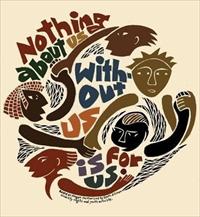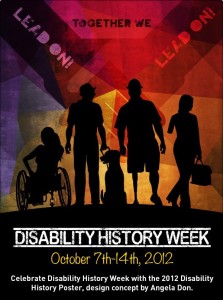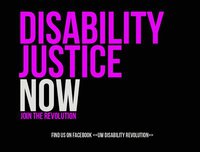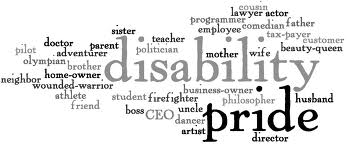The Body as Social Theory: An Analysis of Tobin Siebers’ Disability Theory
Rachel Cohen-Rottenberg
Union Institute & University
Fall-Winter semester, 2012-2013
In his 2011 book Disability Theory, Tobin Siebers raises a number of issues critical to disability studies. Siebers addresses the questions of how disability theory and other forms of critical theory can challenge and inform one another, how disability theory can move past the poststructuralist position that all experience is simply a linguistic construct and give voice to the embodied experience of disability, and how identity politics can move the disability rights movement forward in its struggle for universal access. Underpinning all of these issues are two basic questions: How do we overturn the medicalized representation of disability that portrays impairment as a purely individual matter of physical functioning? And what strategies can we use for representing disability, in Simi Linton’s words, as “a social, political, and cultural phenomenon” (Linton 1998, 133)?
In answering these questions, Siebers explores two related lines of thought. First, he addresses the issue of how to redefine disability identity not as the property of an individual, but as a form of social theory that represents the social and political experience of disabled people. Then, he argues for a paradigm that addresses itself not to individual human bodies, but to the shape, form, and function of the archetypal body for whom our culture is constructed — the body that is welcome in public spaces, the body that has the right to consensual sexual activity, the body that signifies human worth. He concludes that the only way to ensure human rights for disabled people is to represent disability not as an individual calamity, but as the common inheritance of all human beings whose bodies are frail and vulnerable, and who depend upon one another, throughout their lives, for protection and support.
As a professor specializing in disability studies in the departments of Arts and Design and English Language and Literature at the University of Michigan, Siebers concerns himself, first and foremost, with the question of why disabled people are oppressed in our culture. The answer lies in what he calls the “hyperindividualization” of disability (Siebers 2011, 45). Our society, he notes, represents ability as a generalized human trait; in fact, ability is one of the markers of humanity (Siebers 2011, 10). Disability, on the other hand, becomes an individual trait, belonging to unfortunate persons in their particularity, but not representative of humanity as a whole (Siebers 2011, 10). I find this differentiation between ability and disability particularly useful in thinking about what Robert Murphy refers to as the “quasi-human” status of disabled people (Murphy 1990, 110). Does the fact that our culture views disability as a feature of individuals work against seeing disability and humanity as synonymous? After all, if disability is not a part of shared humanity, then it places human beings with disabilities outside of the collective of humanity. The status of the disabled outsider is clear, for example, in the work of Simon Baron-Cohen, who writes that because of an alleged empathy deficit, autistic people are lacking “one of the quintessential abilities that makes us human” (Baron-Cohen 2001, 3).
As became apparent to me in reading Siebers’ discussion of the individualization of disability, the dehumanizing trope of autistic people lacking in empathy is just one iteration of a larger canard against disabled people in general: the charge of narcissism. While Siebers does not specifically address the characterization of autism as an empathy disorder, he points out that the psychological literature is rife with the idea that disability and suffering (nearly always considered synonymous) render disabled people narcissistic; because of their impairments, the literature alleges, disabled people are self-absorbed, trapped in a world of their own, uninterested in anyone else, and unable to love (Siebers 2011, 38-40). Narcissism, much like the autism, becomes an expression of a pathologized individualism. Therefore, when people with disabilities attempt to communicate their pain, advocate for assistance, or struggle against their oppression, they face the charge of being not only hopelessly trapped in their self-absorbed individuality, but also fully responsible for the responses that ensue (Siebers 2011, 34-35). This form of blaming the victim is familiar to those of us who have heard the oft-repeated explanation that a parent or caregiver who kills a disabled person does so under the pressure of the person’s purportedly limitless demands. For example, after the murder of four-year-old Daniel Corby, a local ABC affiliate reported that his mother “was a stay-at-home mother pushed to the edge handling a difficult child with autism” (ABC10 News 2011). The victim becomes responsible for the violence that someone else perpetrates. As Siebers notes, “In short, this is the logic: we killed him, but he made us do it… A more sinister form of violence could not be imagined” (Siebers 2011, 44-45).
It is the hyperindividualization of disability, Siebers believes, that makes disabled people so vulnerable — physically, socially, and politically. I’ve long felt that if others see a person as simply a single individual, they see that person fully alone, unshielded by any group, and available for victimization. Until I discovered the disability community and found out that I was not alone in my experiences, I saw myself as similarly isolated and similarly vulnerable. In this, I am not unique. The distorted perceptions of others, combined with a distorted perception of the self, create the cultural representation of a disabled person who is always an individual, alone and apart. Such a representation helps to create an environment in which disabled people are easily victimized:
[T]he deaf boy on the bus may be entitled to individualized educational planning and medical services, but this special treatment, since it is based on “special rights” and not “civil rights,” exposes him to great isolation and suffering because it ends by symbolizing his individuality as such. (Siebers 2011, 45)
As Siebers notes, the emphasis on disabled people having “special rights” (accruing to individuals) rather than “civil rights” (accruing to members of a group) leaves them particularly vulnerable, because it takes them outside the collective humanity of others and, therefore, outside the protection afforded by the body politic
In order to create a theory of the body that moves past the disempowering individualization of disability, Siebers begins by viewing disability identity as a form of social theory that exposes the power relations between able-bodied and disabled people (Siebers 2011, 33). Although from the center of mainstream culture, ideologies such as ableism — the belief that ability is the measure of human worth — are taken for granted and rendered invisible, disability identity can help to make ableism apparent by describing its impact; Siebers speaks to the power of minority identity to uncover ideology when he writes that the lives of those on the margins “create identities and perspectives, embodiments and feelings, histories and experiences that stand outside of and offer valuable knowledge about the powerful ideologies that seem to enclose us” (Siebers 2011, 8). In this formulation, suffering becomes not an impetus toward narcissism and enclosure in the individual self, but a way of identifying the injustices that cause one’s pain (Siebers 2011, 190). Moreover, a disability identity is not about embracing suffering, but about understanding, analyzing, and critiquing the social structures that cause it (Siebers 2011, 190). The social theory inherent in disability identity, Siebers believes, can lead disabled people to realize that their personal suffering is shared and to join together to create safety, community, and justice (Siebers 2011, 193).
In construing identity as social theory, Siebers moves beyond strong social constructionism into philosophical realism in a way that is very promising for both academic theory and on-the-ground activism. Strong social constructionism, according to Siebers, poses social identity as a construct, but tends to see it as a linguistic representation first and foremost, not as a mode of political analysis and activism (Siebers 2011, 55-56). According to philosophical realism, however, it is precisely because our identities are social constructs that they provide a great deal of information necessary to social analysis and activism. Siebers writes:
Realists, like social constructionists, believe that reality is socially produced. Unlike social constructionists, they believe that social reality, once made, takes on a shape, politics and history that belong to the realm of human action, and as part of human action, it is available for rational analysis and political transformation. (Siebers 2011, 82)
Up to now, I’ve been a dyed-in-the-wool social constructionist, but I’ve always felt somewhat limited by it. The strength of social constructionism lies in its dual understanding that we cannot view bodies outside of culture, and that this insight, in and of itself, is liberating. To some extent, I agree that the core insight offered by social constructionism frees one’s mind from essentialist notions of disability, but as Siebers points out, one can easily become stuck in the individualistic notion that one’s liberation depends on intellectual and emotional clarity (Siebers 2011, 79-80). Much more is needed. Social constructions have a constant impact on the lives of human beings — an impact that we can analyze, work with or against, and change.
In further developing his analysis of identity as social theory, Siebers posits the concept of the “social body,” the body for whom shared spaces are designed — or not designed (Siebers 2011, 85). By looking at the body in this way, Siebers notes, one can easily see the lines of inclusion and exclusion drawn by the architects of architectural and social locations (Siebers 2011, 124-125). I can attest to the power of this way of approaching constructed spaces. With the paradigm of the social body in mind, I now look at a building with stairs but no wheelchair ramp, and I see a building designed for a social body that can easily walk on two legs. When I walk by a building in my town with a sign that reads “Handicap Access: Back of Building,” I am reminded that the front entrance of the building was designed for a social body that is allowed to use the front door, and that another form of the social body must use the back door. In a particularly stunning section of the book, Siebers himself literally brings home his analysis by determining the nature of the social body that is welcome in his own house. After observing such indicators as the width of the doorways, the number and locations of staircases, the heights of cabinets, and the placement of doorknobs and light switches (Siebers 2011, 85-88), he concludes that the social body for whom his house was designed is limited indeed:
In sum, people in wheelchairs, people with diminished sight and hearing, those with difficulty climbing stairs, people uncomfortable reaching high or bending low, and those unable to grasp objects do not fit easily in my house. Nimble six-footers, with an intuitive sense of dark spaces, acute hearing, and a love of staircases do. These are social facts readable in the blueprint of my house. (Siebers 2011, 88)
For me, one of the most powerful aspects of the concept of the social body is that it makes all bodies visible. No body can appear to be “natural” or “neutral.” As Phil Smith notes, under the pressure of social critique, normalcy cannot simply fade into the background as an uncontested category, utterly taken for granted, its privilege and power hidden (Smith 2004, 13). Some bodies are included, and others excluded — not by nature, but by design. Thus, rather than allowing ourselves to think in terms of inclusion and exclusion, a dichotomy that always presupposes a group in the center holding power over a group in the margins, Siebers suggests thinking in terms of accessibility and inaccessibility (Siebers 2011, 94). And so we must ask the questions: On behalf of which social body has a space been made accessible? For which social body is it inaccessible? These questions help to move the focus from individuals who must fear exclusion to the concept of a social space in which no one has the power to deny entrance to anyone else.
Ultimately, though, the concept of the social body does not heal the differential in the human rights granted to disabled and non-disabled people. How do we mend that rift? Siebers’ answer is both simple and profound: If we recognize the fragility of human life as a common inheritance, then disability becomes central to human life, and not its tragic flaw. Because all bodies are vulnerable to injury, illness, and age, disability is not the exception, but “a defining characteristic of human beings” (Siebers 2011, 178). Once we represent disability as a common human experience, it becomes much more difficult to justify withholding rights because of physical difference. As Siebers puts it so eloquently:
What difference to human rights would it make if we were to treat fragility, vulnerability, and disability as central to the human condition, if we were to see disability as a positive, critical concept useful to define the shared need among all people for the protection of human rights? (Siebers 2011, 180)
Moreover, in seeing fragility as central to human life, Siebers argues that we can come to see that independence and dependence are both poles of a false dichotomy — a dichotomy that derives from an individualist paradigm untrue to the nature of humanity. This paradigm, Siebers believes, must make way for a new framework that stresses interdependence, because even those who possess (at least temporarily) what our culture considers normative bodies have a mutual dependence upon one another (Siebers 2011, 182-183). I could not agree more. All human beings must cooperate in such activities as buying and selling goods, constructing buildings, growing food, and raising children. Human society depends upon people benefiting from goods and services that no one person can create alone. Our lives depend upon such interdependence.
The ever-present fact of the fragility of human life is one that our culture turns from in its zeal to celebrate strength, youth, and able-bodiedness. Thus, when disabled people rely upon others for care or assistance, it is considered a loss of dignity and a source of shame. One of the most powerful messages of Siebers’ book is that such a response is neither realistic nor inevitable. His work invites us to consider the transformation in human society that would occur if the reliance of a disabled people upon other human beings were considered neither a shameful nor a tragic turn of events, but a reminder that all human beings rely upon one another for protection, for sustenance, and for life itself.
References
ABC10 News. “Boy, 4, Allegedly Killed By Mother Identified.” http://www.10news.com/news/boy-4-allegedly-killed-by-mother-identified. April 3, 2012. Accessed October 14, 2012.
Baron-Cohen. “Theory of mind in normal development and autism.” Prisme 34 (2001): 174-183. http://www.autism-community.com/wp-content/uploads/2010/11/TOM-in-TD-and-ASD.pdf.
Linton, Simi. Claiming Disability: Knowledge and Identity. New York, NY: New York University Press, 1998.
Murphy, Robert Francis. The Body Silent. New York, NY: W.W. Norton & Company, Inc., 1990.
Siebers, Tobin. Disability Theory. Ann Arbor, MI: University of Michigan Press, 2011.
Smith, Phil. “Whiteness, Normal Theory, and Disability Studies.” Disability Studies Quarterly 24, no. 2 (2004): 1-24. http://dsq-sds.org/article/view/491/668.
© 2012 by Rachel Cohen-Rottenberg








